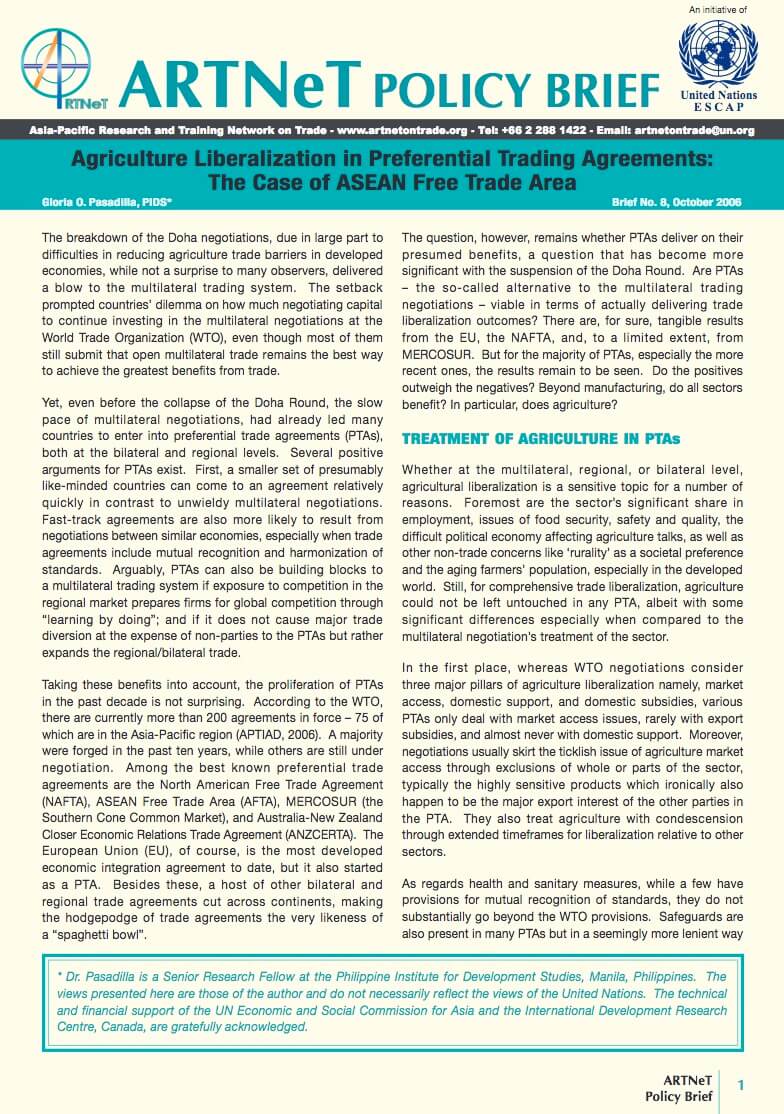Agriculture Liberalisation in Preferential Trading Agreements: The Case of ASEAN Free Trade Area

The breakdown of the Doha negotiations, due in large part to difficulties in reducing agriculture trade barriers in developed economies, while not a surprise to many observers, delivered a blow to the multilateral trading system. The setback prompted countries’ dilemma on how much negotiating capital to continue investing in the multilateral negotiations at the World Trade Organization (WTO), even though most of them still submit that open multilateral trade remains the best way to achieve the greatest benefits from trade.
Yet, even before the collapse of the Doha Round, the slow pace of multilateral negotiations, had already led many countries to enter into preferential trade agreements (PTAs), both at the bilateral and regional levels. Several positive arguments for PTAs exist. First, a smaller set of presumably like-minded countries can come to an agreement relatively quickly in contrast to unwieldy multilateral negotiations. Fast-track agreements are also more likely to result from negotiations between similar economies, especially when trade agreements include mutual recognition and harmonization of standards. Arguably, PTAs can also be building blocks to a multilateral trading system if exposure to competition in the regional market prepares firms for global competition through “learning by doing”; and if it does not cause major trade diversion at the expense of non-parties to the PTAs but rather expands the regional/bilateral trade.
